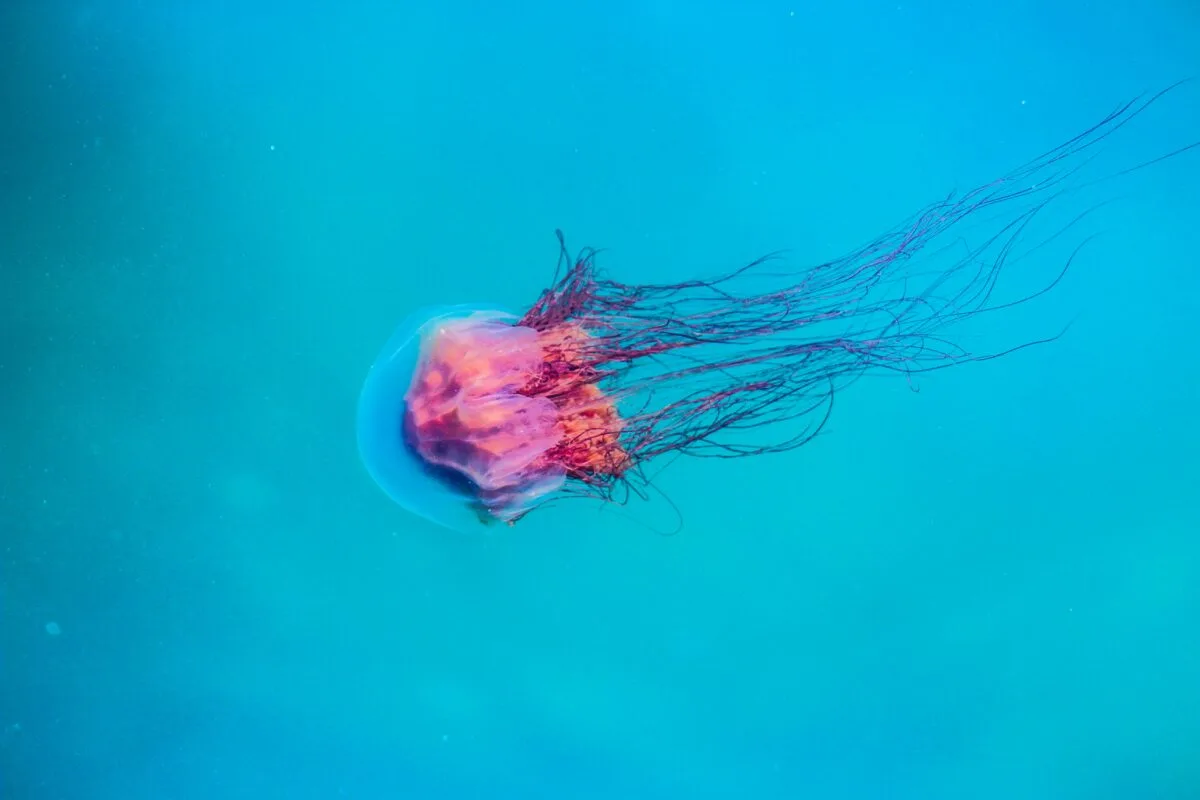Are you curious which jellyfish species are the most deadly and dangerous in the world? You may be surprised that various types of jellyfish can have potentially life-threatening effects.
Let’s explore some of the most lethal species of jellyfish on our planet and delve into their fascinating characteristics.
Learn why these creatures are so dangerous, including the toxins they contain, and how to avoid potential stings from them when visiting certain bodies of water worldwide.
Key Points
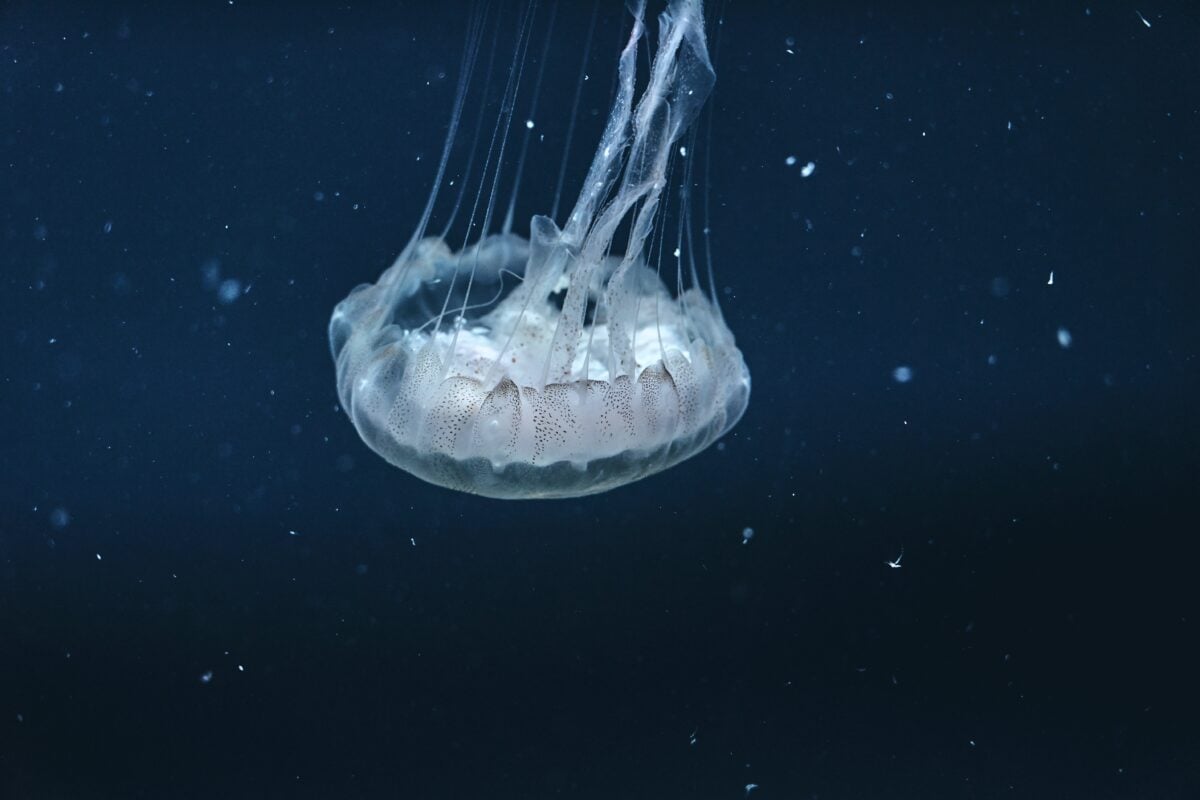
Here is a keypoint table summarizing the information about the most lethal types of jellyfish in the world:
| Jellyfish Species | Characteristics | Habitat | Prevention |
|---|---|---|---|
| Box Jellyfish | Cube-shaped bell with four distinct tentacles reaching up to 3 meters long. 24 eyes. Potent neurotoxin causing intense pain and paralysis. | Warm waters near coastal areas including parts of the Pacific Ocean, Caribbean Sea, Indian Ocean, South China Sea, and Florida’s Gulf Coast. Shallow lagoons and coral reefs. | Wear protective clothing such as long-sleeved shirts and pants. Wear shoes while swimming. |
| Irukandji | Oval bell-shaped body with tentacles ranging from 2-10 cm long. Yellowish brown to orange or purple color. Potent neurotoxins causing severe pain. | Coastal waters of northern Australia, southern Japan, and South Africa’s east coast. | Wear lycra or full-body stinger suits when entering Irukandji-inhabited waters. Use vinegar or hydrocortisone cream if stung by an Irukandji jellyfish. |
| Lion’s Mane Jellyfish | Average bell diameter of 1 meter (3 feet). Tentacles stretching up to 10 meters (30 feet) with microscopic barbed hooks. Potent toxins that can paralyze prey. | Open water. | Stay away from it and exit the area immediately. Wear full-length wetsuits or dive suits and didymo gloves for extra protection against jellyfish stings when near bodies of water where this species might be present. |
| Portuguese Man of War | A colony of four different polyps working together as one organism. Intense sting with nasty chemicals. Nematocysts containing toxins causing excruciating pain. | Near coasts in tropical or subtropical waters, typically near or on top of floating debris. | Wear protective clothing while swimming in waters where they are known to exist. Avoid swimming near patches of seaweed and other floating objects where jellyfish may be hiding. Do not touch any unknown marine organisms while swimming. |
The World’s Most Notorious Aquatic Predator!
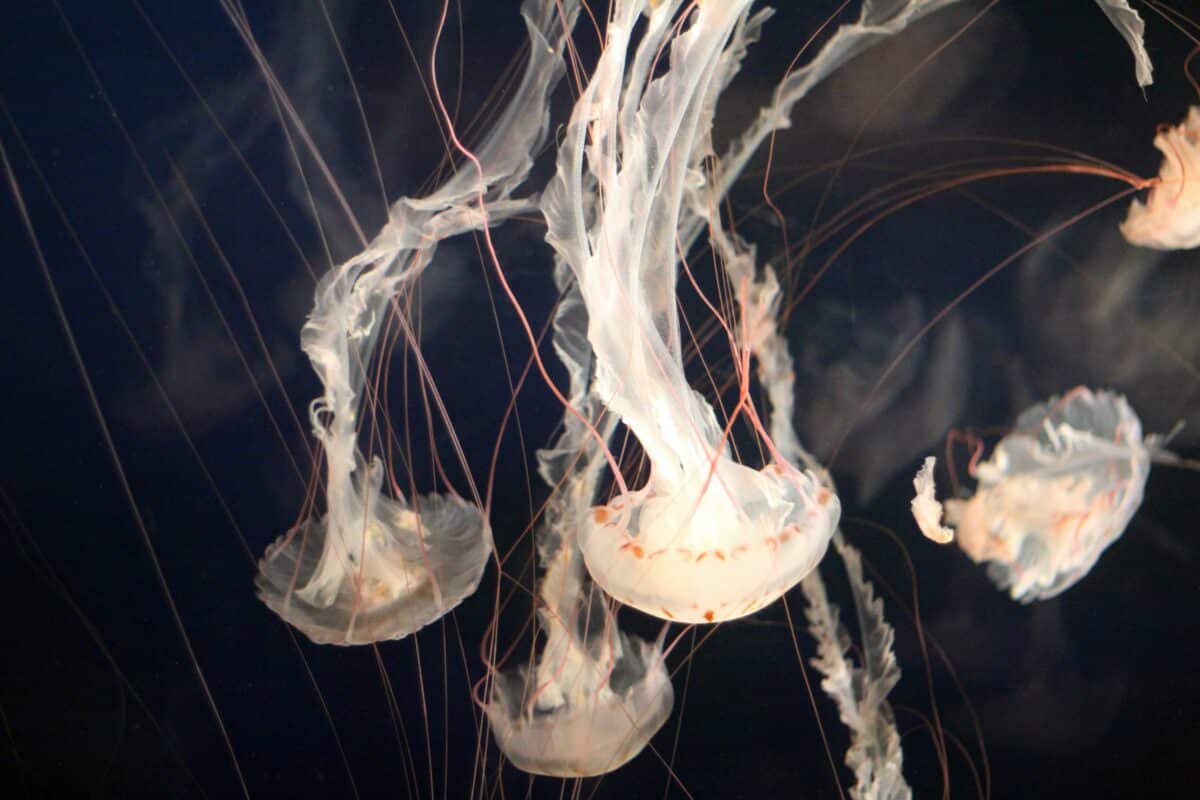
The Box Jellyfish, recognized by various names such as Sea Wasp or Marine Stinger, is a jellyfish found in oceans across the planet and is renowned as one of the most dangerous creatures on Earth. It is characterized by its cube-shaped bell and four distinct tentacles lined with microscopic stingers containing a potent neurotoxin.
This species of jellyfish has been responsible for more deaths than any other marine creature, making it particularly dangerous to humans.
Characteristics
The Box Jellyfish has a cube-shaped bell with four distinct tentacles reaching up to three meters long. They have 24 eyes, which helps them find prey in their environment. Upon contact with humans, the Box Jellyfish’s stingers release potent neurotoxins that can inflict intense pain and paralysis.
Habitat
The Box Jellyfish prefers warm waters near coastal areas, including parts of the Pacific Ocean, Caribbean Sea, Indian Ocean, South China Sea, and Florida’s Gulf Coast. They often inhabit shallow lagoons and coral reefs, where they feed on fish and shrimp.
Prevention
It’s essential to wear protective clothing such as long-sleeved shirts and pants To avoid getting stung by a Box Jellyfish when entering their habitats. Additionally, wearing shoes while swimming can help protect against potential stings from these dangerous creatures.
The Irukandji – A Tiny But Deadly Australian Jellyfish
The Irukandji is another type of Jellyfish native to northern Australia and is considered among Earth’s most venomous species. This species has an oval bell that ranges in size from 0.5-1 cm across, making them extremely hard to spot in their aquatic environment, and their small size belies their potency. These jellyfish carry potent toxins that can lead to severe consequences without proper treatment.
Characteristics
The Irukandji has an oval bell-shaped body with tentacles ranging from 2-10 cm long, depending on the species. Its color ranges from yellowish brown to orange or purple depending on its ocean habitat, where it feeds on plankton and shrimp. These tiny jellyfish also possess two long tentacles containing potent neurotoxins that can cause severe pain if released into human skin upon contact via their sharp stingers.
Habitat
Although this species originates from the coastal waters of northern Australia, they have been found as far north as southern Japan and southward towards South Africa’s east coast due to rising ocean temperatures attributed to climate change.
Prevention
To reduce your chances when swimming in Irukandji-inhabited waters, wear protective clothing such as lycra or full-body stinger suits when entering these areas (especially during sting season). Additionally, you should use vinegar or hydrocortisone cream before seeking medical assistance if stung by an Irukandji jellyfish.
The Lion’s Mane Jellyfish
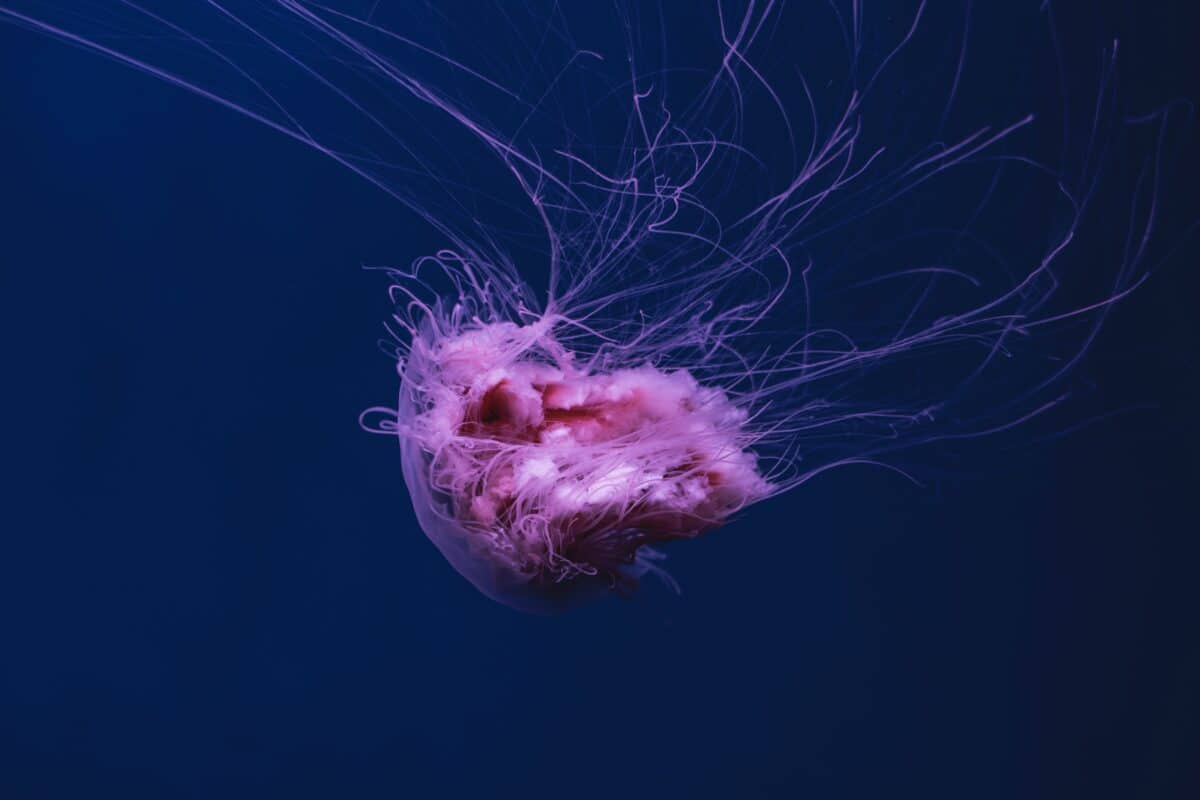
The Lion’s Mane Jellyfish is one of the most notable species, with an average bell diameter of one meter (three feet). Its tentacles can stretch up to ten meters (thirty feet).
This jellyfish has numerous microscopic barbed hooks that line its tentacles, which hold onto its prey once it makes contact. Its venom contains several components, including proteins, enzymes, amino acids, and fatty acids. These combines into a venom that paralyze its prey instantly upon contact.
It can deliver a more powerful sting than an electric shock due to these potent toxins! Furthermore, its sting is painful enough to make humans sick. At the same time, it may not necessarily be deadly unless you have an allergic reaction or have some underlying medical condition beforehand.
If you encounter this creature while swimming or wading in open water, it is best to stay away from it and exit the area immediately! Wear protective clothing such as full-length wetsuits or dive suits and didymo gloves for extra protection against jellyfish stings when near bodies of water where this species might be present.
The Portuguese Man of War – A Deadly Beauty
They are often mistaken for jellyfish, but they are a colony of four different polyps working together as one organism.
Despite their beauty and mesmerizing coloration, the tentacles can deliver an intense sting with nasty chemicals. When touched or brushed up against, the tentacles release nematocysts containing toxins that can cause excruciating pain to their victims.
Depending on the size and age of the organism, the venom can range from mild to life-threatening in some cases. These creatures live near coasts in tropical or subtropical waters, typically near or on top of floating debris.
Protect Yourself From Dangerous Jellyfish Species
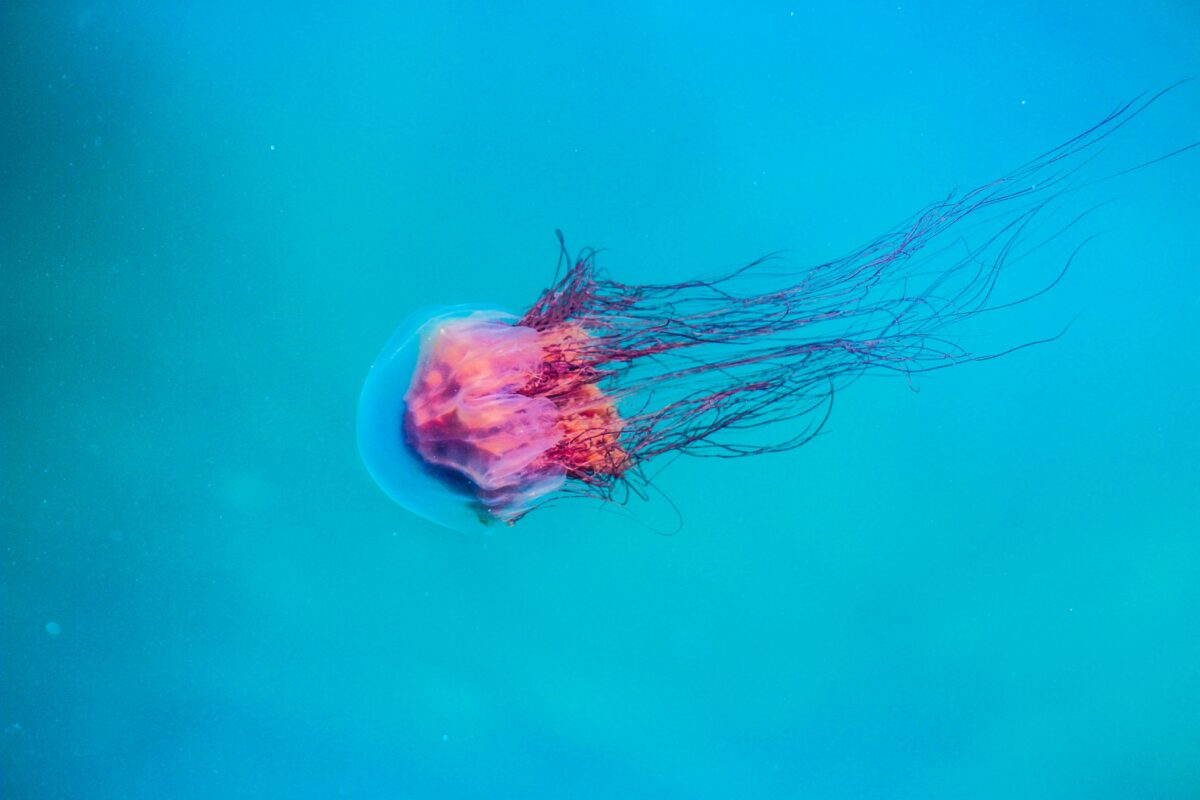
The optimal method to safeguard oneself from jellyfish stings is to wear protective clothing while swimming in waters where they are known to exist. It includes water sport suits made of unique fabrics that can protect against even the most dangerous species of jellyfish.
It is also important to avoid swimming near patches of seaweed and other floating objects where Jellyfish may be hiding. Please do not touch any unknown marine organisms while swimming; avoid contact with them at all costs.
Lastly, it is always wise to check with local authorities regarding current conditions before entering potentially hazardous areas. Such as lagoons and other shallow bodies of water where Jellyfish might live.
Conclusion
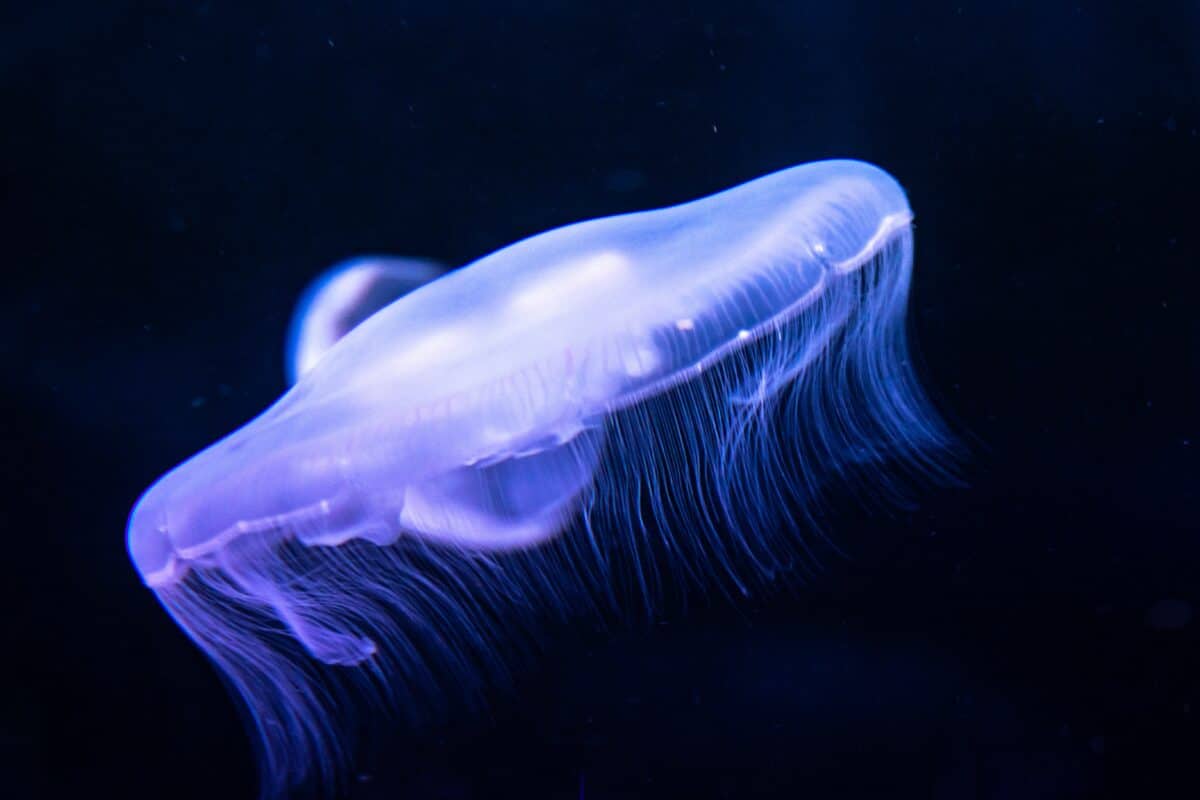
All in all, it’s essential to understand the potential danger of jellyfish stings and how to protect yourself. To avoid being a jellyfish sting victim, wear protective gear such as a sun-protective swimsuit or surf shirt when swimming in areas with certain types of jellyfish.
Moreover, staying aware of the local conditions and reading the signs around bodies of water can help keep you safe from deadly jellyfish species. It’s important to know what creatures are present in any bodies of water you may be visiting – knowledge is power!
Luckily, if you’re curious about Jellyfish and their venomous capabilities, many educational resources are available online, as well as experts who can answer your questions. Take these safety tips seriously, and enjoy our oceans safely!
Thank you for following along this article! Next up:
- Mom and Daughter Takes Hen and Chicks to the Store in Backpacks - April 24, 2024
- Watch: German Shepherd thinks he’s dying at the grooming salon - April 24, 2024
- Watch: Cats Meet Babies for the First Time - April 24, 2024

